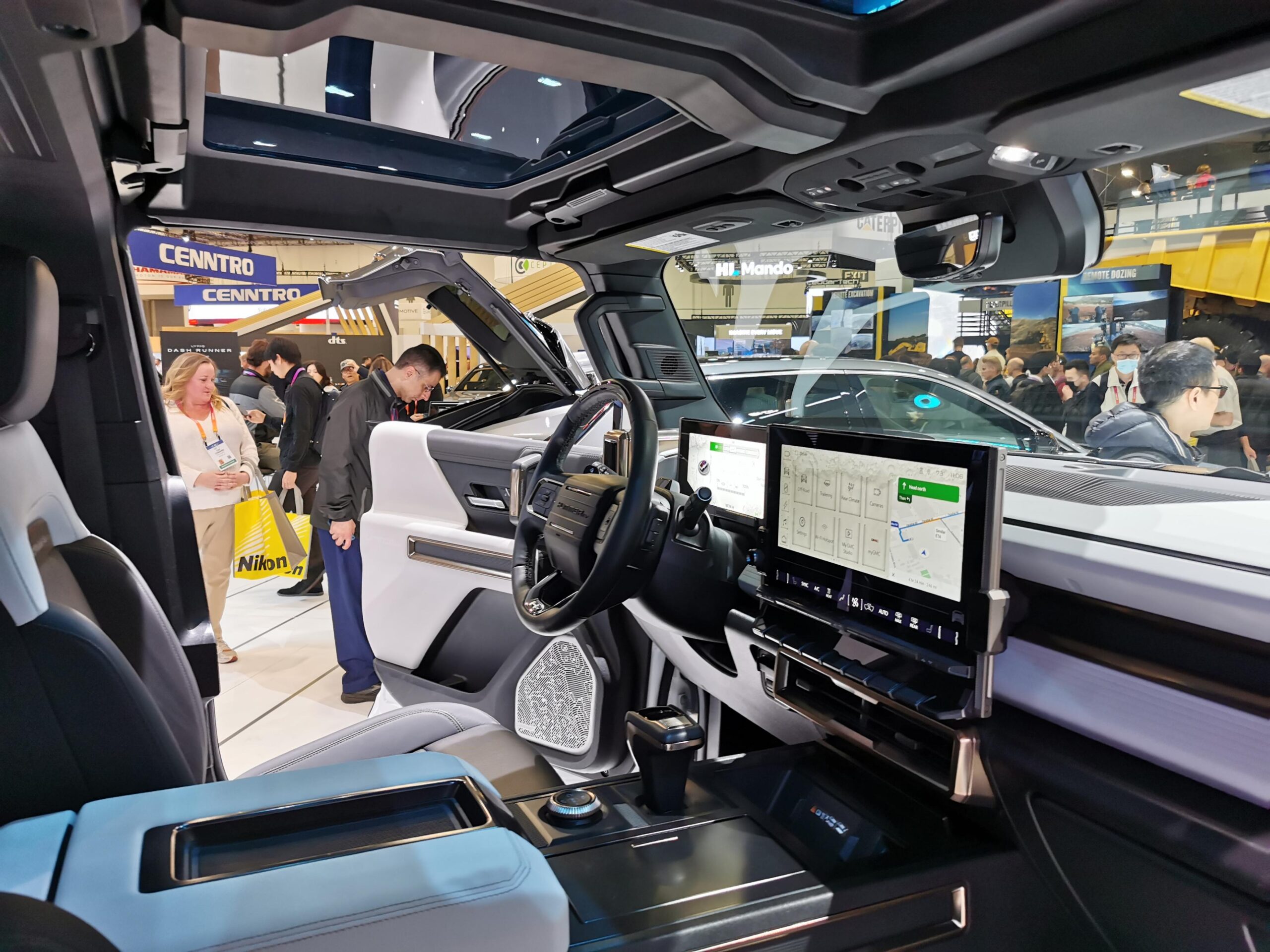It was great to be back in-person for CES 2023. What an incredible week of exciting new innovations, product launches and – best of all – meeting and re-connecting with friends old and new, partners and customers. With such a packed agenda, we couldn’t fit everything in, but here’s a round up of some of the trends and technologies we found interesting.
Artificial Intelligence, grounded in reality
As you might expect, Artificial Intelligence (AI) featured strongly in the mobility track. Think augmentation over automation. Yes, the cool stuff grabs headlines but there was a lot less bullishness on advanced automation than we’ve seen in previous years. For automakers at least, it’s feet on the ground time. It was less about L4 than about making ADAS and L3 more effective. As BMW CEO Oliver Zipse put it, “Not everything that sounds cool makes sense in a car,” while Stellantis CEO Carlos Tavares said his company wouldn’t be rushing to “Give autonomous features just for the headlines,” despite its recent acquisition of aiMotive.
That’s infotainment…over the air
Infotainment always features heavily at CES and this year was no different. For 2023, it was the ever-closer linkage of infotainment with the enhancement of the electric vehicle (EV) driving experience that was notable. Gaming has emerged as a lucrative opportunity to pass the time at charging stations but it’s not the only show in town. From personalisation to smart cockpits that can anticipate – and meet – occupant needs, the opportunities to monetize software and services are clear. Over-the-air (OTA) delivery is the secret sauce that will drive the software upgrades, predictive maintenance, route planning and charging point location services that will make it all happen. Connectivity will be doing a lot of heavy lifting for this.
The “Ultimate Digital Driving Machine”
BMW turned heads with ‘Dee’, its’ colour-changing concept car, but for a glimpse of a more colourful future, it was what CEO Oliver Zipse said in his keynote speech that really grabbed our attention: “Digital leadership in the car is not about who has the biggest screen, the highest processing power or who writes the most lines of code. The only thing that really counts is what the user feels and experiences.”
Zipse’s observation that “Cars are technology, and our expectations of technology have changed” chimes with what we’re seeing and hearing from OEMs everywhere: the importance of creating a seamless digital experience for customers. In keeping with some of the big themes from OEMs throughout last year, Zipse underlined the importance of partnerships in delivering that experience, stating that writing all the software in-house isn’t as important as being able to bring different components together quickly, to integrate them perfectly into a vehicle.
Software is king
Keeping with the software theme, Stellantis CEO Carlos Tavares’ keynote was an insightful drill-down into the transformative role of software in vehicle development. “Over ten years ago, we said that software was eating the world. Really, it was just getting started.” Tavares’ call for simplicity, and the need to reduce friction between customers and the technology in their cars reflects the massive shift OEMs have made towards customer experience in technology development.
“We understand that software is a way for us to get closer to our customers,” said Tavares. “It gives us better understanding of their needs in real time, to create experiences that give exactly what they need, so they can focus on living, not on the buttons.” The need to avoid burying user experience under layers of menus resonated at a lot of industry events last year. Tavares’ run-through of Stellantis’ new tech stack gave useful insights into how they’ll be achieving this.
Agriculture: the poster child for digital transformation
“You won’t find two industries that have a greater impact on the world than agriculture and construction,” said John Deere CEO John May at his keynote address, before going on to detail the sheer scale of how digital technology is transforming these sectors.
With more than 500,000 connected machines operating on over a third of the earth’s surface, this was less about concept machines than it was about the here and now. From integrated displays with embedded software to fully autonomous tractors, connectivity, IoT and AI are fuelling some of the most exciting developments in agritech today. Sustainability driven by precision agriculture was a big theme; it was interesting to learn how connected technologies can reduce fertilizer or herbicide use by as much as 60%. And while a lot of focus at CES was on EVs and battery technology, May raised the prospect of farmers growing their own fuel in the form of biofuels – an interesting angle to the sustainability discussion.
The next chapter is here
Cars aren’t just cars any more. The software-defined vehicle is here and Cubic is excited to be in the front row, providing the connected technologies and data analytics that are fuelling the future of mobility. To learn more about the possibilities of connected technologies, check out our Connected car, connected future eBook today.

